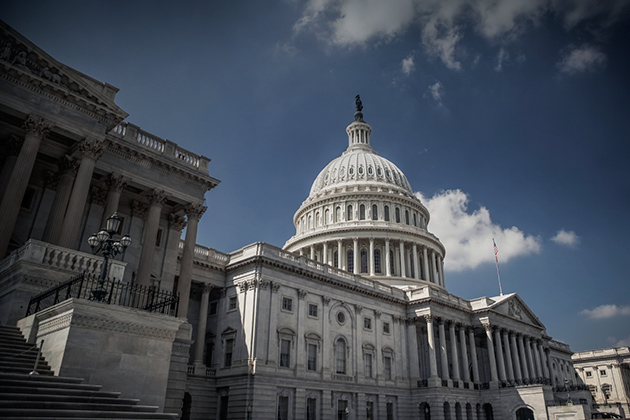
Q: At midnight on Oct. 1, the federal government furloughed hundreds of thousands of workers and partially closed many programs because Congress couldn't pass a single spending bill. Why has the appropriations process become so contentious?
A: We have a ‘perfect storm’ situation – many elements working alongside each other to produce a kind of gridlock on steroids.
First, both parties – but particularly the Republicans – have become more heavily influenced by members with a clear ideological agenda, so compromise becomes more difficult. In essence every issue – agency appropriations, Obamacare, whatever – gets defined as a moral concern, and it's a lot harder to find common ground there than if we were dealing with a routine difference about spending levels. The old “go along to get along” norms don't prevail any more.
Second, we have a Speaker of the House, John Boehner, who is under attack by a small but significant portion of the Republican caucus. He sees his job on the line if he crosses the 30 or so extreme conservatives and brings a bill to the floor they can't support.
Third, President Obama – whatever his other skills – has never proved particularly adept at dealing with a Congress that, after all, he only served in for four years (and for two of those he was running for President).
Finally, and maybe most important at the moment, conservative Republicans, seeing the defeat of Obamacare as their mission, have decided to latch onto any means available, even if (as is the case now) the bill at hand isn't directly related to the Obamacare issue. This happens to be the battleground of the moment, and they feel they have an ideological, moral, and constituent-supported mission to take advantage of it to achieve their goal.
Q: The shutdown is being seen as pitting the Republican-controlled House of Representatives against the Democratic-controlled Senate and President Barack Obama. What does each side hope to accomplish?
A: In big picture terms, both sides would say they want the government to continue running smoothly, but the Republicans want to destroy Obamacare and the Democrats want to preserve it. More narrowly, both sides want to preserve and energize their base. For the Republicans, that means making it seem like they're doing everything possible to cut off the Affordable Health Care Act, virtually at the start. For the Democrats, it means, above all, not appearing to cave in to the demands of a right-wing minority.
Q: This is not the first time the federal government has shut down over an impasse regarding appropriations – the Congressional Research Office counts 17 shutdowns since 1977. What kinds of political ramifications have there been following past shutdowns?
A: The classic case was in 1995-96, when the Republican Congress, led by Speaker Newt Gingrich, made major cuts in social program appropriations and President Clinton let the government shut down (at least the non-essential elements) rather than accept the reductions. The Republicans calculated that the ensuing chaos would work against the Democratic President, but they turned out to have made a major strategic error. Public opinion sided with the President, who went from a neck-and-neck position in the polls against Senator Bob Dole, the prospective Republican nominee, to a substantial lead that he never lost. The Republicans ultimately caved in and restored much – but not all – of the funding that Clinton wanted. In the 1996 elections, the Republicans lost some seats, but held on to both the House and Senate. So in the end it was a victory for the Democratic President and a defeat – but not a total rout – for the Republican Congress.
Q: What roll does the Affordable Care Act, also known as “Obamacare,” play in the standoff?
A: The Republicans are using the appropriations process as their designated “battlefield” to defeat Obamacare, and they define the Affordable Care Act as an issue of principle. Were it not for this issue, it's clear that a compromise on spending could be worked out.
Q: What are the political risks involved in the shutdown for Democrats and Republicans?
A: For now, for the Republicans, the country seeing the party as held captive by a small, ideologically extreme contingent – thus putting some Republican seats in places like New York and New Jersey in danger. Even now you see some Northeastern Republicans like Rep. Peter King condemning the party's tactics. For the Democrats, the country blaming the President and his party for the disarray and economic consequences that will result from a long-scale shutdown. Later, assuming the budget ultimately passes and does not de-fund or delay Obamacare, the Republicans risk alienating their more ideological supporters by seeming to “cave.” If the Democrats were to accept any delay or defunding of Obamacare – or any significant modification whatever – they would likewise risk alienating part of their base.
Q: What signs should people look for to see if the standoff might be ending?
A: The first sign will be a steady trickle of House Republicans, including many more senior members, saying that it's time to fold the tent. Ultimately Speaker Boehner may say that he has no alternative but to bring a “clean” bill – that doesn't defund or delay Obamacare – to the floor. A second sign could be the President making some general commitment to review some specific aspects of Obamacare that have generated a lot of opposition (e.g., the medical device tax) at some future time. This might conceivably give Speaker Boehner a means of saving face. Beyond that, a rising tide of Wall Street pressure, and a declining stock market, might put more pressure on business-oriented Republicans to say that they're willing to defer the Obamacare fight to another day.
Q: What does the so-called debt ceiling have to do with the current standoff?
A: This will be the next battlefield, and most likely a reprise of the current fight. Many economists and others feel that the stakes there are even higher than the ones now, since a federal default will send international economic markets reeling.



